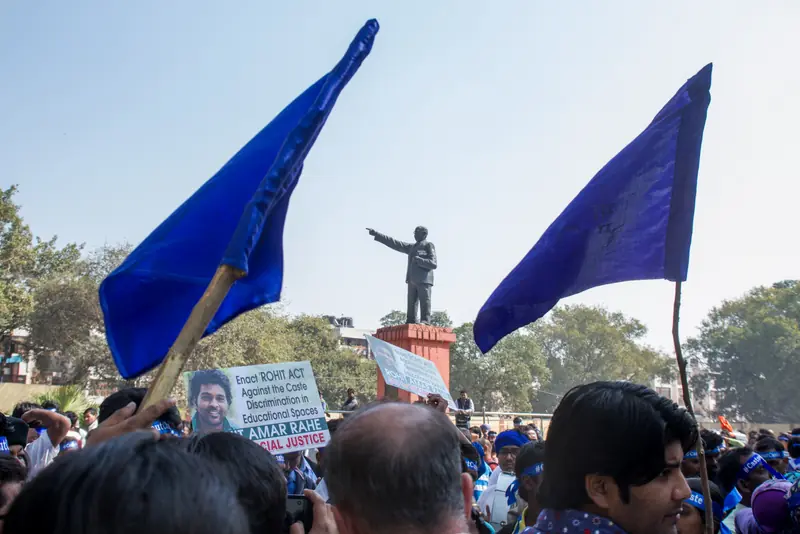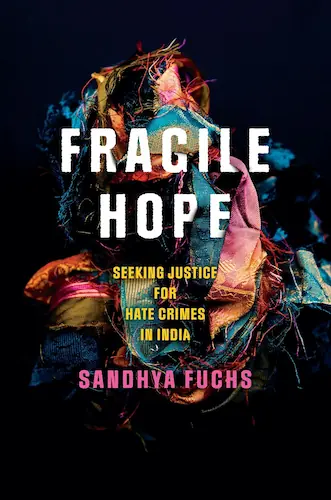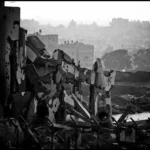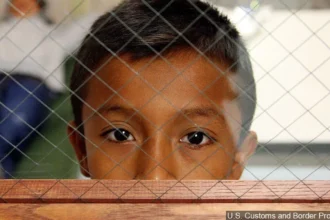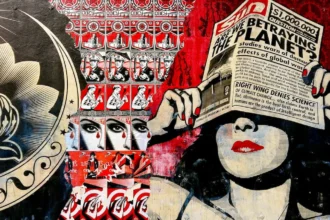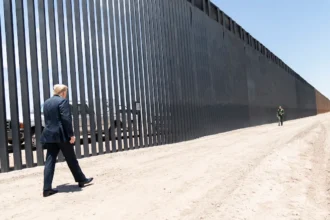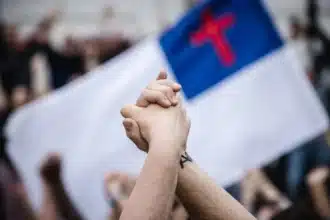It seems that we don’t currently exist in a time of hope. Perhaps more specifically, we don’t seem to be living in a world which inspires much faith in the ability of legal systems to deliver justice, particularly for communities who have historically faced oppression and systemic violence.
In fact, scholars and lawmakers have increasingly drawn attention to the failure of human rights regimes and antidiscrimination policies to protect and socially uplift historically marginalised groups, amid the global intensification of ethnic and religious conflict and growing democratic erosion. One type of legislation that has often been at the centre of these debates, and has become a particular target of criticism, is hate crime law.
Critics across the geographic, cultural and political contexts have repeatedly warned that hate crime laws represent a false promise as there has been little evidence that they prevent bias-motivated attacks. Some have pointed out that hate crime laws rely for their implementation on the very actors and criminal justice institutions —like the police— that have historically reinforced the oppression of minorities and marginalised groups. As a result, a growing number of scholars have concluded that the very concept of hate crime law is counterproductive to the promotion of social equality and that such laws might best be abolished all together.
Hate crime laws appear to have a double function: to punish past acts of identity-based violence and prevent future ones.
I am not here to challenge these critiques. In fact, I consider them fully justified as hate crime legislation across the world has at best had a fraught track record, and at worst heightened institutional and social inequalities.
However, in my new book Fragile Hope: Seeking Justice for Hate Crimes in India (Stanford University Press 2024), I suggest that studies which underline the limits and failures of hate crime law may not always tell the full story. Scholars, legal commentators and policy makers have thus far largely neglected to explore what legal success means to hate crime survivors themselves, and how they creatively mobilise hate crime legislation for their own restitutive and social justice efforts.
A New Direction in Hate Crime Scholarship
Fragile Hope is an exercise in legal anthropology, which aims to step into this gap.
It explores the relationship between hate crime law, structural inequality and hope by tracing the social life of the only law in India that bears the contours of hate crime legislation: the 1989 Scheduled Castes/ Scheduled Tribes Prevention of Atrocities Act (PoA). The PoA aims to protect Dalits (caste groups who are still treated as “untouchable” by many within the Hindu caste hierarchy even though India’s constitution abolished the practice of untouchability in 1950) and Adivasi (indigenous communities) from targeted violence by upper castes.
Drawing on almost two years of ethnographic fieldwork with survivors of caste atrocities from Dalit backgrounds, human rights activists, police, and courts in the North Indian state of Rajasthan between 2016 and 2018, the book sets out to answer three urgent, yet often overlooked questions:
What does it really mean for hate crime laws to be successful? To whose vision of success are they accountable? And how are survivors of hate crimes, their families, and their communities trying to find success within a legal landscape that is fundamentally stacked against them?
Peeking behind the curtain of official crime statistics and conviction rates and exploring the everyday life of hate crime laws through the lens of intimate narratives, Fragile Hope makes an unexpected observation: analyses, which primarily highlight the toothless nature of hate crime law run the risk of painting an incomplete picture and ignoring the creative avenues of hopeful engagement, which this type of legislation can inspire.
My fieldwork revealed that in Rajasthan, the PoA is gradually and invisibly rewriting systems of caste hierarchy and sociopolitical power from below even though the explicit and implicit caste biases of legal actors often undermine individual atrocity complaints. The key to this transformation is the project of, what I call, legal meliorism that has grown in dialogue with the PoA: the attempt to use hate crime law to gradually improve oppressive societal conditions through the construction of new strategic legal communities, new epistemologies of justice, and everyday habits of hope.
Situating the Prevention of Atrocities Act
To understand the unique dynamics of hope and despair hate crime law can inspire, it is important to note where the PoA sits, both, within India’s legal framework, and within the global legal landscape. Within India, the PoA is often referred to as a special criminal law, which aims to infuse criminal law with constitutional ideals of substantive equality by creating a specific category of offences for a certain group or subject. However, within a global legislative context legal scholars and anthropologists have often referred to the PoA as a hate crime law.
Fragile Hope ultimately asks anthropologists and legal scholars to explore a new and different set of questions.
Hate crime laws, which have increasingly been introduced worldwide since the 1980s, punish violent expressions of prejudice. They typically try to combat bias-motivated violence in two ways: first by enhancing punishments for existing criminal offences when they are committed against members of protected groups. Second, by sometimes introducing new, substantive special offences to outlaw prejudicial language, as well as physical or material misconduct rooted in prejudice.
The PoA has followed a similar pattern. The PoA is the only law in India to explicitly criminalize all verbal, physical, and symbolic violence against Dalits and Adivasis. The act created a new category of offences called ‘atrocities,’ which, to be prosecuted under the Atrocities Act, had to be committed against members of the Dalit or Adivasi communities by someone not belonging to these groups. It also enhanced penalties for certain crimes under the Indian Penal Code of 1860 (IPC)[1] such as physical assault or sexual harassment.
However, a more radical socially transformative vision, rooted in India’s unique history of civil liberties, also underpinned the PoA. When I interviewed P.S. Krishnan, former Special Commissioner for Scheduled Castes and Tribes, and one of the original authors of the Atrocities Act, in 2018, he emphasized that the PoA was intended to do more than punish. It was meant to gradually convert a society violently divided along lines of caste and indigenous identities into one defined by equality, liberty and non-discrimination – principles that Dr. Ambedkar, the father of the Indian Constitution who himself belonged to the Dalit community, had enshrined in the country’s foundational legal framework.
Inevitable Failures?
Yet, despite or perhaps because of, its punitive rigour and ambition, the PoA has always been a deeply polarising law, and many have questioned its ability to generate fundamental social change.
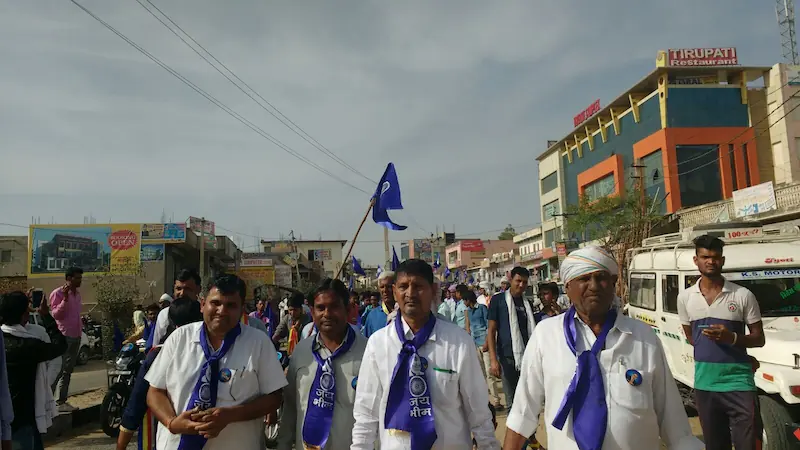
Anti-caste scholars have proposed that ingrained caste bias within police and judiciary has systematically dismantled the PoA through two central mechanisms: First, the disproportionate reliance of atrocity investigations on the police, who often dismiss claims made by Dalits and Adivasis, questioning the credibility of their narratives. Second, a systematic refusal at the judicial level to acknowledge the casteist and prejudicial motives behind attacks on the communities protected under the PoA.
So, what exactly is hopeful about this situation?
Initially, I too thought that there might not be much reason for hopefulness at all, as I observed complainants from Dalit backgrounds encounter the same obstacles to formal justice delivery, which so many other scholars had described. I witnessed disillusioned survivors of caste atrocities turning away from police stations and observed how true stories of hate and oppression slipped through the gaps of a criminal justice system, whose evidence regimes are often incapable of capturing the lived experience of discrimination.
Hate Crime Law and the Meliorist Hope Complex
However, as my fieldwork crept on, I learned something unexpected: in Rajasthan institutional legal failures did not seem to mark the endpoint of Dalit engagement with the PoA. Instead, they represented the starting point of a multifaceted, multi-scalar agenda of legal engagement among atrocity survivors, anti-caste activists and lawyers.
This agenda aimed to produce wider shifts in legal culture and legal truth regimes, by opening up new spaces of creative agency that would allow historically marginalised communities to gradually rewrite structures of sociopolitical hierarchy and legal power from below.
The success or failure of hate crime legislation cannot simply be measured in conviction rates.
Therefore, I argue in Fragile Hope that the PoA has emerged as a site for what I call, a project of legal meliorism. Coined by pragmatist philosopher John Dewey, whose teachings profoundly influenced Dr. Ambedkar’s intellectual project, meliorism refers to the belief that social conditions may be bettered. through persistent, targeted action.
Across seven chapters, I explore how atrocity survivors create what they termed umid ki aadatein (habits of hope), around the PoA. I trace the story of Aunty-ji, a middle-aged woman, whose son took his life after being tortured by a group of upper caste men. I recount how she actively labours to create new communities of resistance through the PoA. By collecting data on caste atrocities, creating therapeutic communities and online knowledge sharing platforms, she tries to move more Dalit bodies and voices into the legal spaces they have historically been excluded from.
Explore Books Written by Our Contributors
I also follow a group of human rights activists as they stage public protests in front of courts and police stations to alert the media to issues of investigative negligence in complaints filed under the PoA. And I accompany Roop Singh, an agricultural labourer and father of three, as he negotiates a settlement in the aftermath of land grabbing attempts and a physical assault by his upper caste neighbour and leverages the PoA to mitigate future threats of upper caste violence.
As these new practices have symbiotically grown around the bureaucratic trunk of the PoA, they have gradually begun to chip away at the structural allegiance of India’s criminal legal system to upper-caste worldviews: a system, whose structures of evidence temporal frameworks have repeatedly silenced marginalised voices.
Hence, Fragile Hope, ultimately argues that the success or failure of hate crime legislation cannot simply be measured in conviction rates.
Instead, the initial “success” of this type of legislation may well lie in the projection screen it represents for new visions of legal equality, agency, and hope, as well as in the new legal socialites of resistance it generates.
Can Hate Crime Law Have a Hopeful Future? Perhaps
In Fragile Hope I propose that India’s Prevention of Atrocities Act radically challenges juridical and political assumptions about the type of transformation that hate crime laws can and should create. On the one hand, the act exposes familiar, lived dilemmas and evidentiary contradictions that haunt legal attempts to legislate against prejudice and hate at a global level. On the other hand, its social life reveals that in the interstices of daily life, hate crime laws are not the sum of their procedural, juridical obstacles, conviction rates, or individual case outcomes.
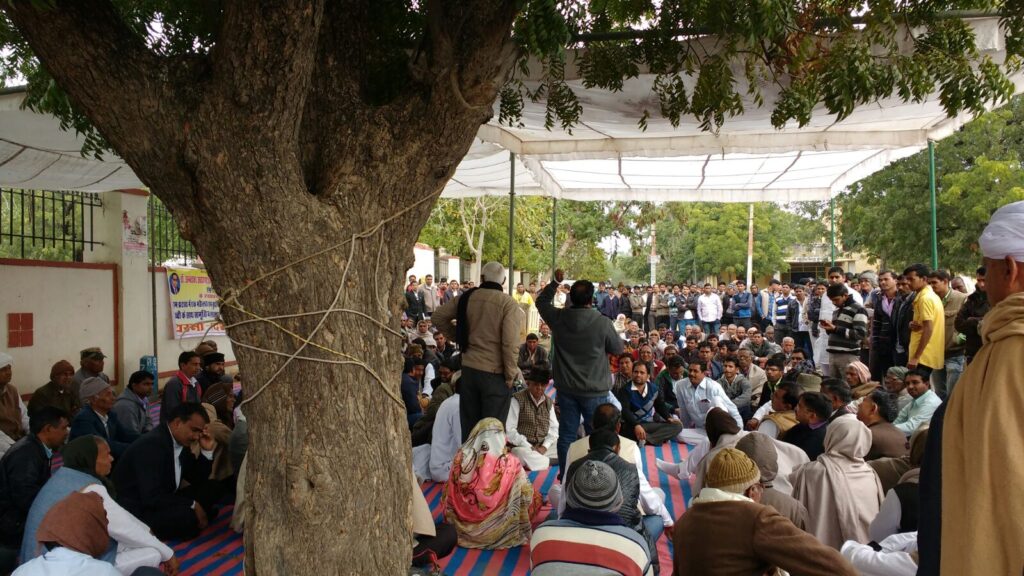
Instead, they become open battlefields, on which different stakeholders fight for the right to imprint their vision of equality, justice, and truth onto the epistemologies, temporalities, and procedures of official law. In Rajasthan, the PoA has become a canvas on which Dalit families and communities paint their own ideas of agency and restitution. In doing so, they actively try to reduce the historical footprint of dominant castes —not just on the PoA— but on the structure of general criminal law to infuse it with their own.
However, this agenda of institutional transformation is not uniformly conceptualized, experienced, or enacted. The PoA and the search for justice after violent incidents of discrimination and hate come to bear on individuals and groups in heterogeneous and discordant ways. When the Atrocities Act is pulled into the everyday life of families, communities, politics, and activist missions, it becomes gendered, fractured along socioeconomic lines, and can generate new forms of intracommunity hierarchy and even violence
Rethinking Hate Crime Law: New Questions for Sociolegal Scholarship
Fragile Hope ultimately asks anthropologists and legal scholars to explore a new and different set of questions. Hate crime laws appear to have a double function: to punish past acts of identity-based violence and prevent future ones.
Hence, the sociolegal debates around hate crime legislation have often focused on questions of “how”: How does one prove a prejudicial mindset in court? How might one predict the likelihood of bias crimes in certain settings? Yet, they have neglected to explore what hate crime laws achieve socially and politically, what new interpretations of law, politics, and social equality they generate, and who gets the ultimate say in the interpretation of their societal aims?
I want to propose that the global failures of hate crime laws to deliver convictions for perpetrators of discriminatory violence, along with the projects of legal meliorism they inspire, can teach us a lot about the structural incompatibilities between formal systems of criminal law and lived experiences of discrimination.
My personal hope is that Fragile Hope will mark a starting point of a broader, global scholarly exploration into the unexpected social lives of hate crime law so that we may understand how criminal legal systems can and must be transformed to integrate the voices and truths of historically marginalised communities.
[1] The IPC was replaced by the Bharatyia Nyaya Sanhita in 2024


